Understanding the Importance of Terpenes in Cannabis
Terpenes in Cannabis: An Overview
Terpenes are one of the most critical parts of the medical cannabis experience and the cannabis plant aside from the cannabinoids like THC and CBD.
It is important for those with a medical cannabis card to learn about terpenes when making product choices that will lead to their intended medical outcomes for relief, healing, health, or well-being.
What are Terpenes in Cannabis?
Terpenes are the aromatic compounds found in the essential oils of the cannabis plant and all other plants that are responsible for the flavor, aroma, and sometimes effect.
Cannabis terpenes are truly the largest differentiators between cultivars (various cannabis strains) and what may be all the difference between cannabis that makes the patient want to tackle their to-do list and cannabis that puts a patient on the couch. Terpenes in cannabis are also being researched for various medicinal benefits that are proving to change the lives of millions who have a medical cannabis card.
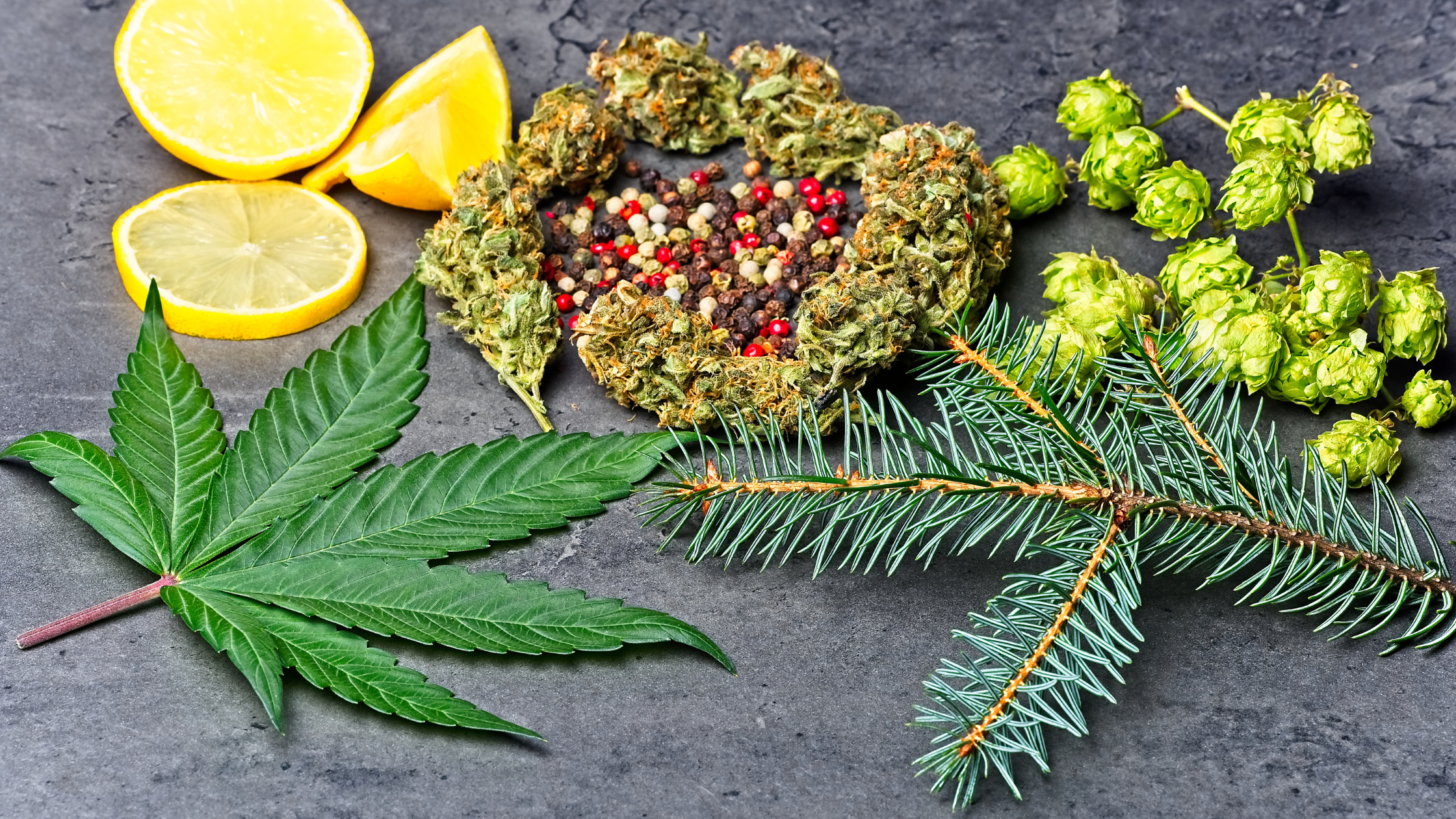
How Do Terpenes Work with Cannabinoids?
Terpenes in cannabis work synergistically with cannabinoids and other chemical compounds in what is known as the entourage effect, where terpenes enhance the overall efficacy of medical cannabis.
The best analogy to explain the entourage effect comes from prominent cannabis researcher Dr. Ethan Russo: “2 + 2, instead of equaling 4, it gives you an 8 in terms of the benefit.”
Simply put the entourage effect describes how terpenes interact with cannabinoids and other compounds within cannabis, with the idea that these compounds create a greater effect on the body while working together than working separately in their isolated form.
How Can Terpenes Contribute to the Effects of Cannabis?
Different terpenes possess unique therapeutic and medicinal properties, from relaxation and pain relief to focus and alertness, as well as other potential health benefits.
As a result, understanding and selecting specific terpenes in medical cannabis strains can significantly impact patients’ symptom relief and overall well-being, enabling a tailored and more effective approach to medical cannabis treatment.
Where Can You Find Terpenes in Cannabis Plants?
Where are the terpenes in cannabis? To identify these aromatic organic compounds, one can examine the minuscule, adhesive “hairs” that coat the surface of cannabis blossoms, known as trichomes. These microscopic, crystalline structures house resin glands that contain the essential oils and volatile compounds responsible for generating the psychoactive effects and therapeutic attributes of the cannabis plant, including terpenes.
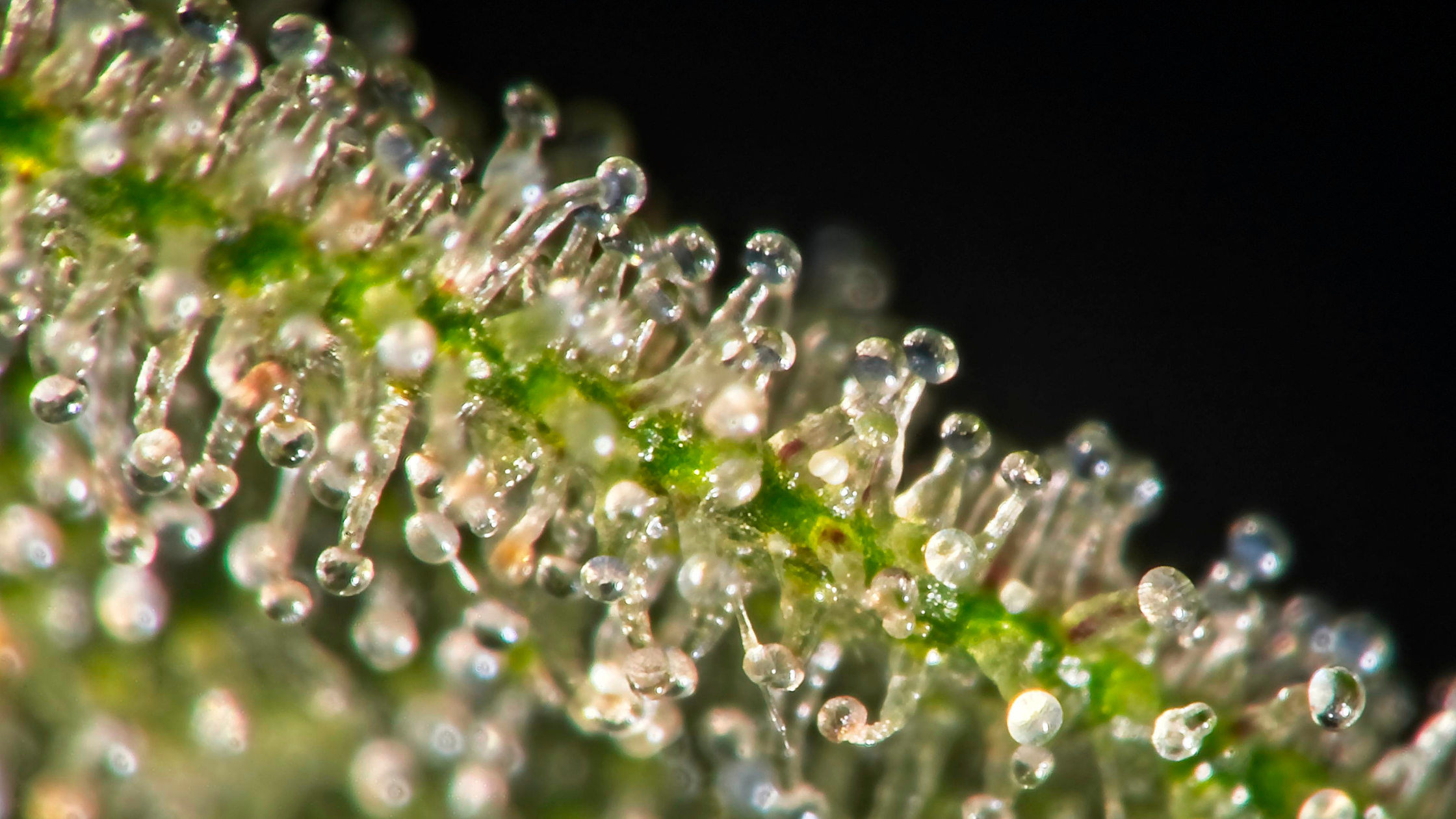
Terpenes, at their core, originate from isoprene molecules concealed within cannabis trichomes, though these isoprene molecules remain imperceptible to the naked eye. Nevertheless, the trichomes themselves are visible by the eye, and you can get a better look at them through a magnifying glass or microscope. Beyond adorning the surface of cannabis flowers, trichomes can also be found on the leaves and stems of marijuana plants.
Exploring the Medicinal Benefits of Terpenes
Compassionate Clinics of America is passionate about the role terpenes play in the medical cannabis experience and the way terpenes help us target medical outcomes for patients using cannabis for relief from certain conditions. Here are 5 of the most common cannabis terpenes to have on your radar with some of the medical and therapeutic properties that they are being researched for:
Limonene: Found in the Essential Oils of Cannabis and Citrus Fruits
Limonene is one of the most popular of marijuana terpenes due to its energetic, invigorating properties. Limonene is likely one of the most recognizable terpenes. The smell one gets when peeling into the rind of an orange: that’s limonene. Limonene is one of the plant compounds that is abundant in all citrus fruits and has a (you guessed it) citrusy and sweet scent.
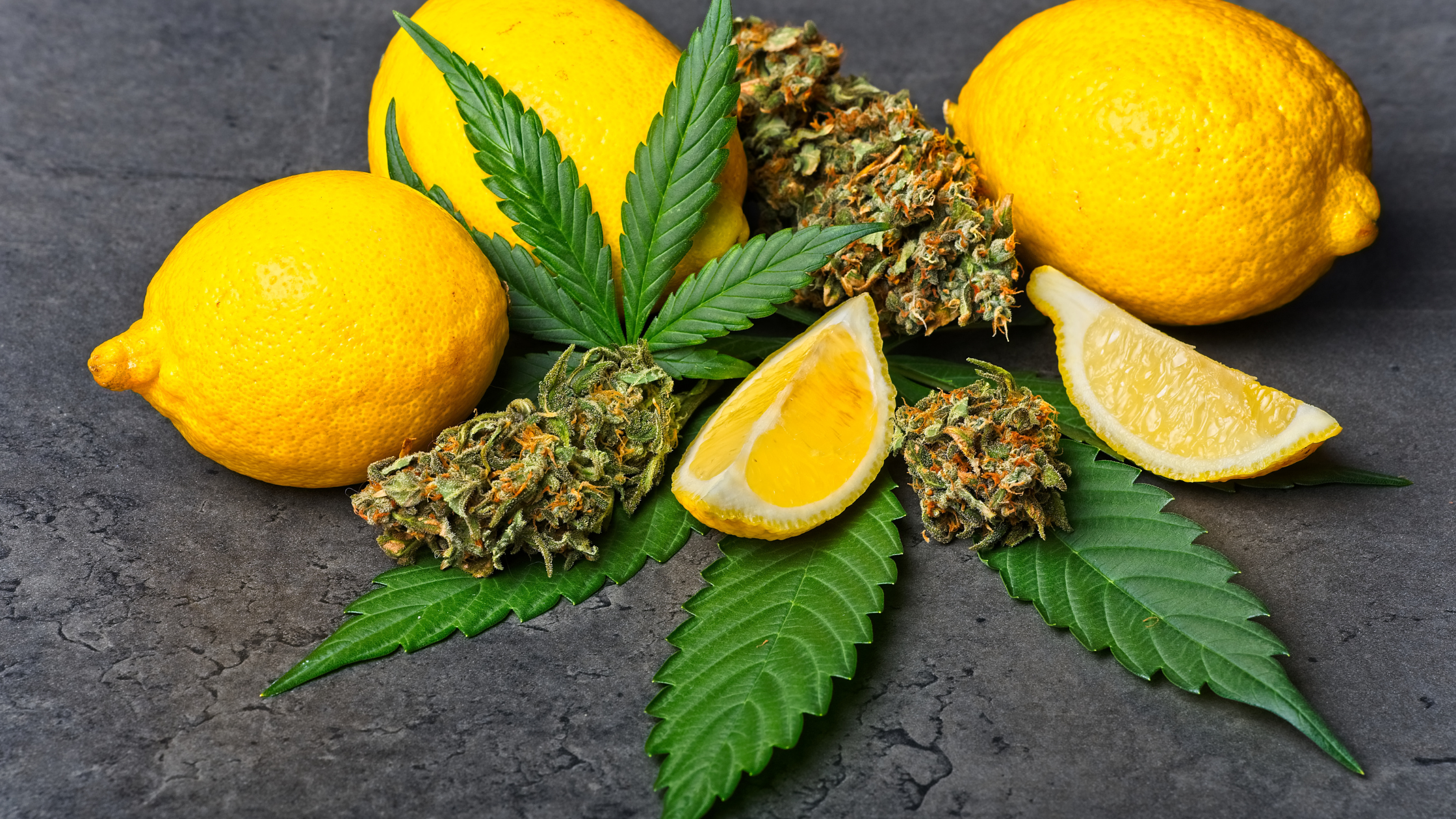
Limonene is a cannabis terpene that is highly valued for its anti-anxiety properties, with animal studies observing decreased anxiety and depression when limonene is administered. Limonene is also known to be an anti-oxidant and crucial in reducing cell damage. It also holds anti-inflammatory attributes with the ability to affect the way pain is signaled to the brain, with practitioners believing that this citrusy terpene can contribute to pain management.
Finally, limonene is being researched for its anti-cancer properties, with research supporting its potential ability to attack and kill cancer cells in studies of lung cancer, prostate cancer, and colon cancer.
Common marijuana strains containing limonene include Sour Diesel, Super Lemon Haze, Jack Herer, and Durban Poison.
Myrcene: One of the Most Common Cannabis Terpenes
Myrcene is the most common terpene in cannabis and is found in many cannabis strains, being present in up to 20% of the terpene profiles of the cannabis products one may find in a medical cannabis dispensary after receiving their medical cannabis certification.
Myrcene has a balsam, peppery, and spicy aroma and flavor, and is commonly found in thyme, mango, lemongrass, ylang-ylang, parsley, hops, and verbena.

Myrcene as it exists in cannabis plants possesses many medical benefits, but is mostly known for its sedative effects, used in plant medicine over centuries across the world as a tranquilizer and muscle relaxant. Initial animal studies have shown that when administered myrcene for its pain relieving properties, animal subjects experienced increased rest and time asleep. While this theory is only preliminary, some scientists claim that myrcene can reduce pain by increasing the brain and spinal cord’s own opioid chemicals.
Myrcene also holds antioxidant attributes, protecting cells against toxicity, as well as potential anti-microbial properties.
Various cannabis strains with myrcene include OG Kush, Tangie, Harlequin, and Granddaddy Purple.
Humulene: A Commonality Between Beer and the Cannabis Plant
For anyone who appreciates beer, humulene may be a familiar terpene, as it is not only in cannabis, but it is the most abundant terpene in hops, which give beer its flavor and aroma. Humulene is also found in common sage, black sage, balsam fir, ginseng, spearmint, and ginger. Humulene is unique as it acts as both a terpene and a cannabinoid, meaning that it binds to the cannabinoid receptors much in the way THC, CBD, and other cannabinoids do.
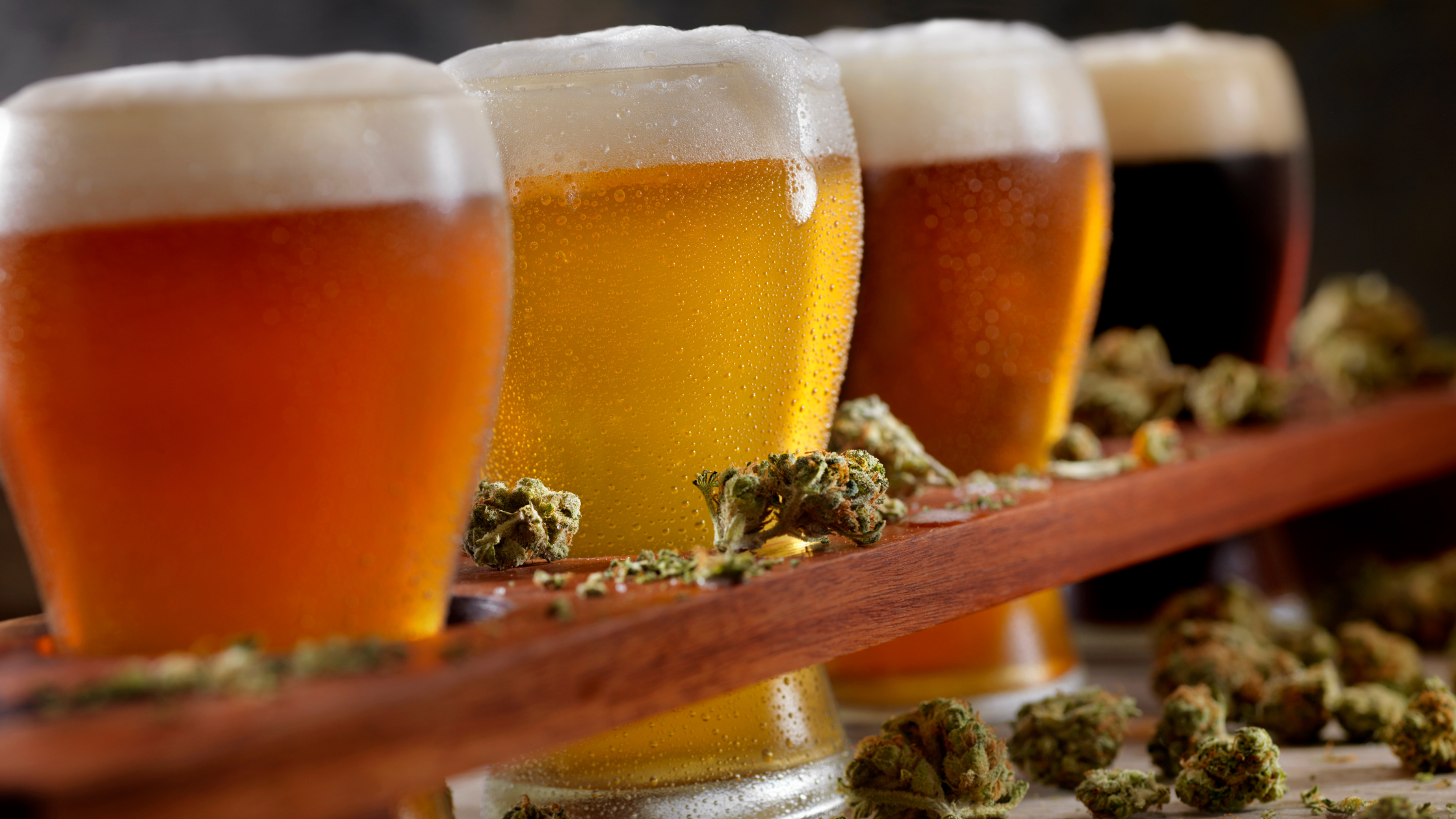
When humulene found in black sage was researched for its medicinal properties, it showed to have possible anti-inflammatory properties, suggesting that humulene may be helpful in the treatment of inflammatory diseases. Humulene found in balsam fir was discovered to hold anti-bacterial properties, particularly being effective against Escherichia coli and Staphylococcus aureus. Humulene is also a powerful insect repellent.
Humulene is being increasingly researched for its potential anti-cancer and anti-tumor properties, as it’s believed that humulene has a role in the depletion of natural oxygen within cancer cells.
Common marijuana strains in which humulene terpenes play a role in the effects include Girl Scout Cookies (GSC), Headband, and White Widow.
Alpha Pinene: The Most Abundant Terpene in the Natural World
The terpene pinene comes in two isomers, alpha-pinene and beta-pinene, with alpha-pinene being more abundant in cannabis.
Alpha-pinene is the most abundant terpene in the natural world and is most associated with the smell of pine needles. If you’re walking through a forest of pine trees, those distinctive aromas are pinene terpenes at play. A cannabis strain with pinene in its terpene profile will taste and smell, you guessed it… piney.
Alpha Pinene holds many therapeutic benefits, and is being researched for its anti-inflammatory attributes as well as its potential for pain management for those living with inflammatory conditions, including arthritis, cancer, and Crohn’s Disease.
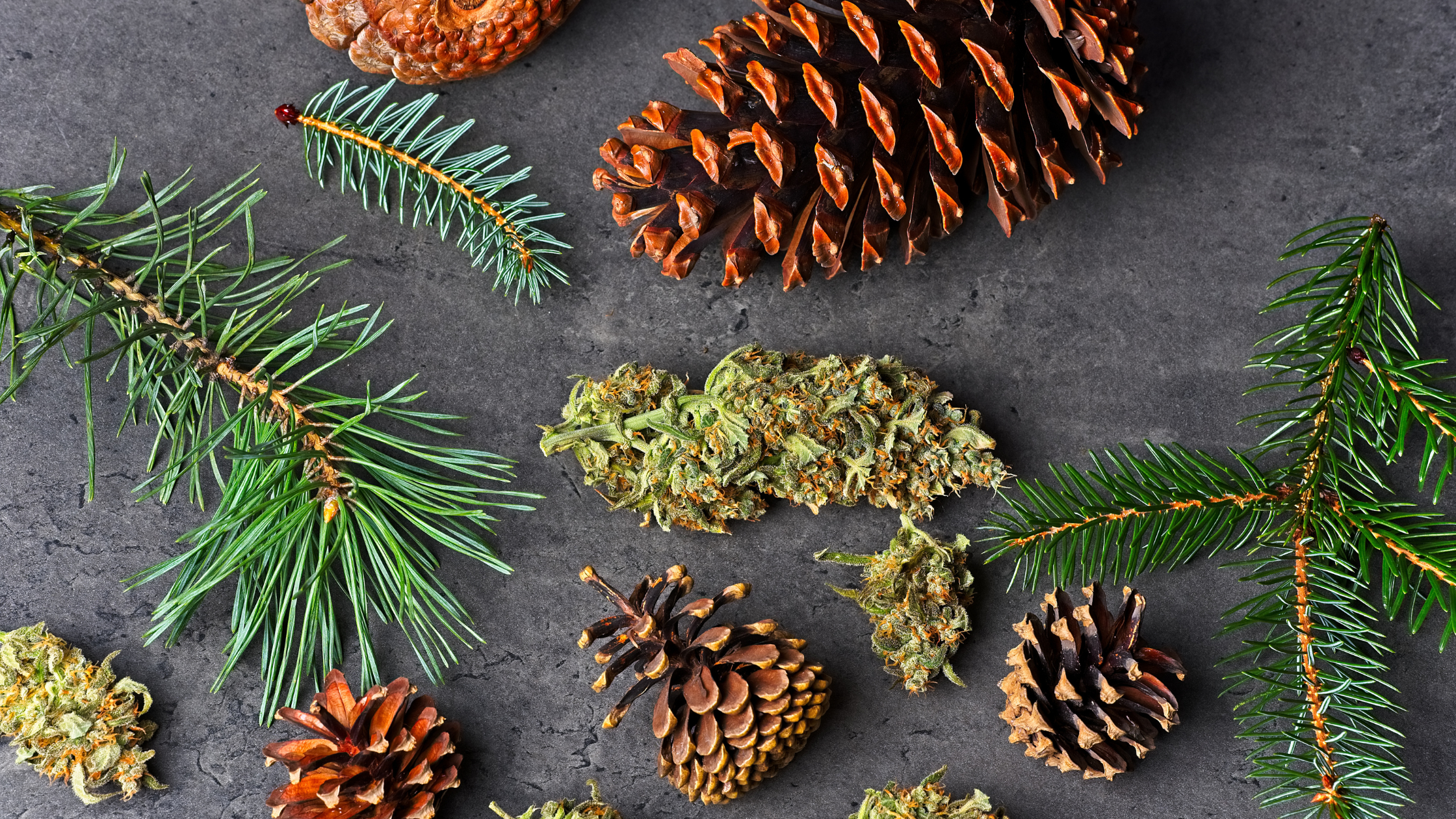
Alpha Pinene also has bronchodilator properties, with possible implications for the treatment of asthma and other lung conditions. Alpha Pinene is known to produce focus, improve memory and help with creativity, and may show promise as a supplement for those living with dementia-related diseases.
Alpha Pinene also holds anti-bacterial properties towards certain bacteria, including Staphylococcus and Streptococcus.
Common strains of the cannabis plant in which pinene is one of the predominant terpenes include Blue Dream, Pineapple Express, Grape Ape, Blueberry, and White Fire OG.
Beta-Caryophyllene: Enhancing the Therapeutic Properties of Many Cannabis Strains
Beta-caryophyllene is mostly recognized for its spicy, peppery aroma, as it is also the dominant terpene in black pepper, and has a uniquely large size and structure.
Beta-caryophyllene plays an interesting role within the world of clinical cannabis with many interesting therapeutic qualities, including its ability to activate several receptors in the body, including the CB2 of the Endocannabinoid System (ECS). The CB2 has a therapeutic role in treating neuropathic pain and other neuroinflammatory diseases.

Beta Caryophyllene has demonstrated analgesic properties with potential in helping people find relief from neuropathic pain. It is also potentially an antioxidant for the liver, and it may also help control gastric acids. Beta Caryophyllene may also reduce inflammation in the brain by decreasing the chemicals that cause inflammation-induced stress. One animal study demonstrates Beta Caryophyllene’s potential to reduce alcohol intake, being a possible terpene to aid in addictions.
Cannabis strains with beta-caryophyllene terpenes present include Bubba Kush, Sour Diesel, Chemdawg, and Original Glue (also known as Gorilla Glue or GG4).
The Importance of Terpenes in the Medical Cannabis Experience
Once a patience receives their medical cannabis recommendation, they will be able to explore various cannabis cultivars (“strains”) and products that have various terpene profiles. We always recommend that our patients learn as much as they can about terpenes in cannabis when choosing products to get to their desired outcomes for relief.
It’s important to note that prominent cannabis researcher Dr. Ethan Russo has stated that terpene concentrations higher than 0.5% in cannabis are of “pharmacological note”, meaning that terpenes in cannabis products must present at higher than this level to have a medical or therapeutic outcome.
Learn More About Terpenes with Compassionate Clinics of America
At Compassionate Clinics of America, we are dedicated to helping provide as much education as possible to our patients to help guide them through the cannabis experience. Be sure to read the articles on our blog and stay tuned to this space as we continue to release more information to ensure those who receive a medical cannabis certification from us are empowered in their journey towards healing, health, and well-being.
























